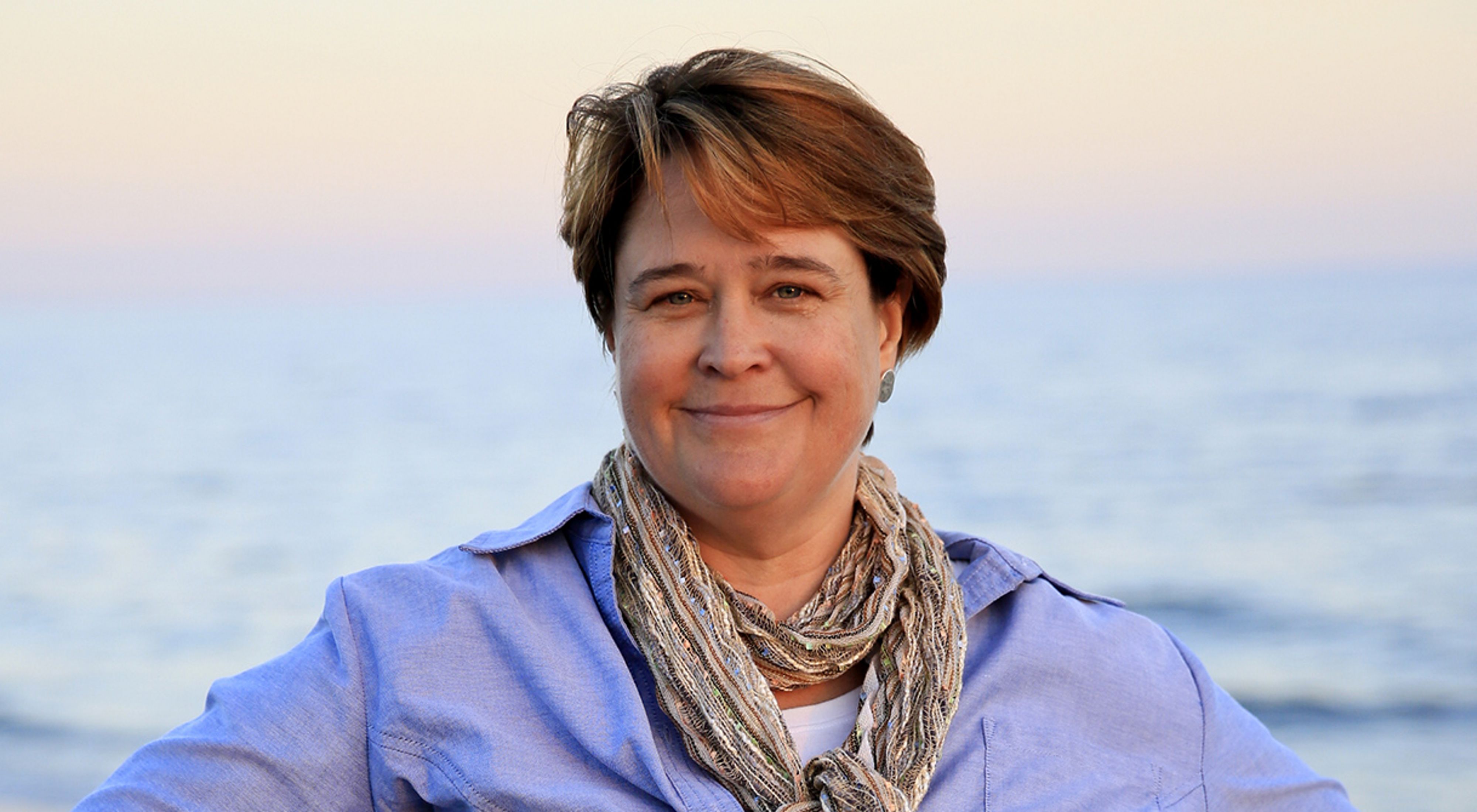Much of your work focuses on helping communities protect their coastlines. But before the Conservancy, your life was pretty sweet.
Chocolate was my first career. I went to culinary school and was very excited about being involved in pastries and confections. I worked with a chef who opened a truffles company, and then I moved into high-end catering, making wedding cakes.
Why turn to nature when there’s dark chocolate to be had?
With catering, I found that people were surprisingly unhappy—especially the brides, who wanted perfection. I wanted to spend more time with my husband and our two boys. I got involved in Cub Scouts and Boy Scouts, and I had this flood of love come back—this love of nature and being outdoors.
Eventually you went back to school and earned undergraduate and graduate degrees in science. Now you spend your time conserving areas on the Eastern Seaboard. How does that work?
The way I approach the work I do is by thinking about what the coastal habitat provides people—the food and industry and commercial goods and services that people depend on. By protecting habitat for salt marshes and sea grasses, we maintain the coastal functions and protect communities from storms and from flooding.
How much difference would healthier coastal habitats make for towns during a hurricane?
It wouldn’t necessarily limit damage from a big storm like Hurricane Sandy. But sea grasses buffer the wave action and help with erosion. They reduce impacts from smaller storms.
Lately, you’ve been working in Bridgeport, Connecticut, a postindustrial city some have, rightly or wrongly, called New England’s Detroit. How do you conserve nature in such an urban place?
Bridgeport is really called Park City—it has 46 parks that we thought could help with reducing threats from storms. A place like Bridgeport that has so much opportunity—with the coastline and three rivers—is a great place to get people involved in the natural systems.
Last year that work took you to Bridgeport’s Pleasure Beach, a defunct amusement park complete with a run-down carousel. Do tell.
We knew this was an important barrier beach for protecting the coastline for the city. It was the site of a community beach and amusement park beginning in the late 19th century. A fire in 1996 burned the access bridge connecting it to the mainland. With no people around, the beach became a haven for threatened shorebirds like least terns and piping plovers. Then the city announced plans to restore access to Pleasure Beach via water taxis, so the Conservancy got involved.
How did the Conservancy help protect those birds?
I had stewards and scientists come out and teach 150 volunteers, mostly middle school students, about the birds and how to be respectful of the nesting areas. On the day of the event, I had each student paired with a Conservancy expert.
So by sending youth out there to clean up the beach, you teach them about the birds and the greater importance of the beach as a barrier for the city. What about the other Bridgeport project you worked on—fixing up a small city park?
This park, Svihra, was not a park that we would have chosen, but it was a high priority for the city. It’s on the same site as a kindergarten through eighth-grade school, and it’s forested and located along a stream. The community was concerned about the illicit activity happening next to this school. Most folks wanted it closed down or the trees cut down. I think they thought if it were a big open field they could see what was happening.
Eventually, after lots of meetings, the community decided the park was worth saving, if it could be kept clean and safe. That’s great. But, and this will sound harsh, why spend so much time on a project that is so small?
Conservation in urban areas is incredibly valuable. That’s where people are. The Conservancy has done a lot of great work protecting land and water where people aren’t, but to make a big difference in a state like Connecticut where there’s lots of development, we have to go where people are and where people live.
Still, I have to imagine that for many people, the idea of urban conservation is an oxymoron. Has it ever been for you?
I think I’ve known from the beginning that conservation is really dependent on people who are understanding of what nature and natural systems do for them. To get everyone to appreciate nature, we need to do conservation in urban areas.
In Bridgeport, you’re a long way from the rural, agricultural area in Brooklyn, Connecticut, where you raised your family. Does that make it difficult to connect with people who have grown up in the city?
It doesn’t feel that different when I’m in the park with these kids. It feels the same as it did for me. It’s a natural area. They’re excited about frogs and toads in the same way that I was as a kid.
